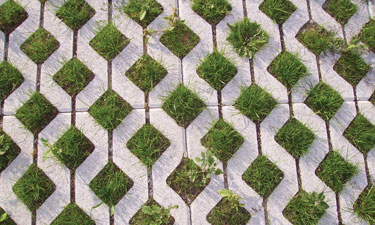 In many places across the country, parks and recreation agencies are among the largest landholders in a given city, county or town. From San Diego to Philadelphia, and in dozens of communities in between, parklands are also being used to soak up rainwater where it falls, and in some places, parks are managing stormwater from surrounding areas. For the more than 700 cities that have a combined sewer system, this could mean new dollars for park and rec agencies. These “green infrastructure” approaches are not new to many enterprising agencies, but the recognition of parks as players in the discussion on how we as a nation manage our water resources is new.
In many places across the country, parks and recreation agencies are among the largest landholders in a given city, county or town. From San Diego to Philadelphia, and in dozens of communities in between, parklands are also being used to soak up rainwater where it falls, and in some places, parks are managing stormwater from surrounding areas. For the more than 700 cities that have a combined sewer system, this could mean new dollars for park and rec agencies. These “green infrastructure” approaches are not new to many enterprising agencies, but the recognition of parks as players in the discussion on how we as a nation manage our water resources is new.
Last year, NRPA was invited to serve as a charter member of the White House Green Infrastructure Collaborative. This group of federal agencies, associations and nonprofits is charged with working collaboratively to advance green infrastructure in constituent communities. The collaborative will build capacity for green infrastructure implementation by providing a platform for national stakeholders to:
- Leverage joint efforts to promote the multiple community benefits of green infrastructure;
- Build and share knowledge around emerging green infrastructure technologies and policy issues; and
- Facilitate shared inquiry into the best ways to encourage adoption of green infrastructure technologies at the local level.
To further these goals, in October the Environmental Finance Center at the University of Maryland and the Syracuse Environmental Finance Center hosted a first-of-its-kind Green Infrastructure Learning Lab in College Park, Maryland. This event was designed to build on the Green Infrastructure Summits offered during the past two years that promoted peer-to-peer exchange among communities of all sizes as they grapple with local stormwater management requirements and goals across the country. The Green Infrastructure Learning Lab continued this type of exchange, but also connected communities with the tools, resources and experiences of the Green Infrastructure Collaborative, a number of nonprofit organizations and associations working on these issues.
This writer led a session featuring local stakeholders on “Tools to Create Community Spaces” where participants discussed opportunities and challenges to implementing green infrastructure projects in public parks, streets and schoolyards. The session featured Arlington County, Virginia’s, Parks and Recreation Department, the county’s Bureau of Environmental Services, and the Chicago-based nonprofit Openlands, which is working on transforming schoolyards in Chicago to manage stormwater and to provide wildlife habitat and, of course, great places to play.
Some of the key takeaways from the lab include:
- Most green infrastructure projects are driven by the need to comply with Clean Water Act requirements. Some park and recreation agencies are responsible for their stormwater, many are not.
- Competing uses in parks (active versus passive recreation, humans versus dogs) can make it difficult to implement green infrastructure projects, but good design using permeable pavers, strategically placed rain gardens and underground detention basins make multiuse public parks feasible.
- Budgets are tight! If you are not a stormwater permit holder, you are unlikely to be incentivized to sink extra dollars into managing stormwater beyond the borders of your park. Successful projects take a partnership with a water utility or other agency to help pay for the water management.
In municipalities of varying climates, there is a growing appetite to address water resource issues with green infrastructure. Whether managing stormwater runoff, mitigating flooding risks or recharging groundwater supplies, park and recreation agencies, as major landholders, have opportunities to help their communities with water challenges.
NRPA continues to engage with federal partners and sister organizations in promoting the role of parks and rec as solution providers in addressing water-management issues. If you or your agency has good examples of green infrastructure approaches to managing stormwater, flood control or water capture/groundwater recharge, please share by emailing the hyperlinked address below.
Kevin O’Hara is NRPA’s Vice President of Urban and Government Affairs.
NRPA Supporting Green Infrastructure
NRPA was recently awarded a two-year, $2.5 million grant from the JPB Foundation to explore the social and environmental benefits of green infrastructure projects in underserved communities. This new program, a component of the Great Urban Parks Campaign, contributes to our efforts to engage public parks and recreation in implementing goals that exemplify the Three Pillars — Conservation, Health and Wellness and Social Equity. We are collaborating with the American Planning Association and the Low Impact Development Center to implement this work.
Our approach includes two simultaneous strategies: We will create and disseminate evidence-based educational resources to support park and recreation leaders and planners to implement green infrastructure in parks to maximize community benefits; and we will award grants to support replicable green infrastructure projects in parks in underserved communities. These strategies will enable us to document and share models for how park and recreation agencies, working in partnership with other agencies and organizations, can contribute to community resiliency and make green infrastructure do more to connect children to nature, provide recreational access for the public and provide more environmentally responsible solutions for stormwater management.

